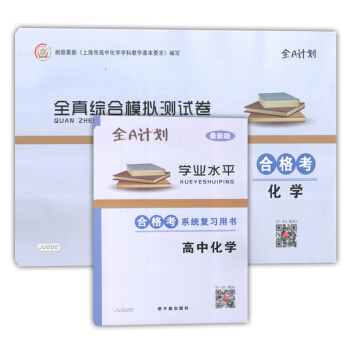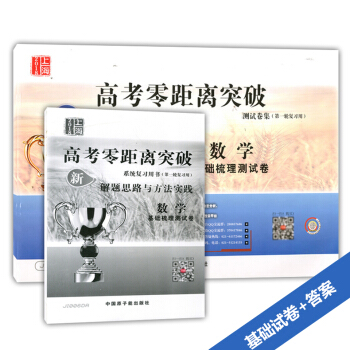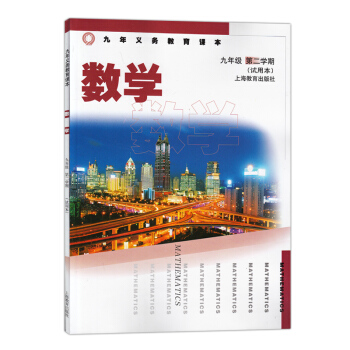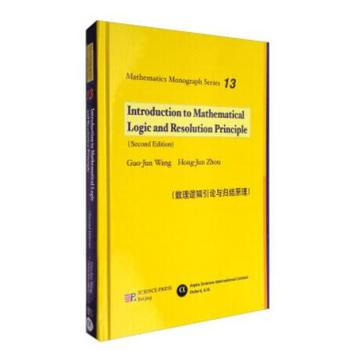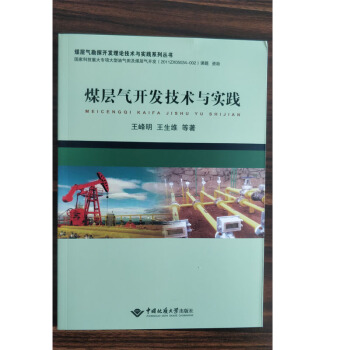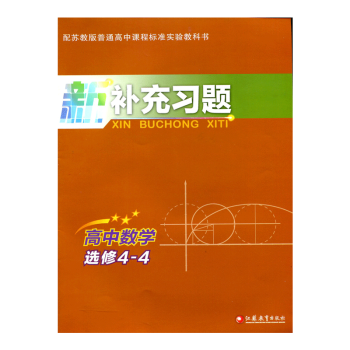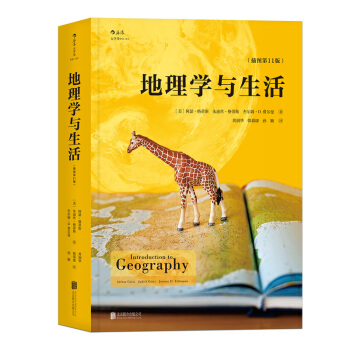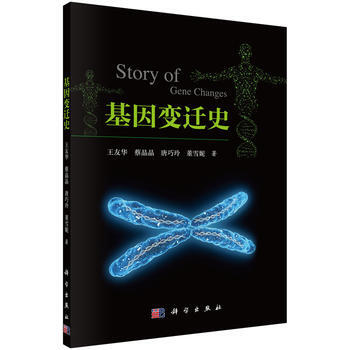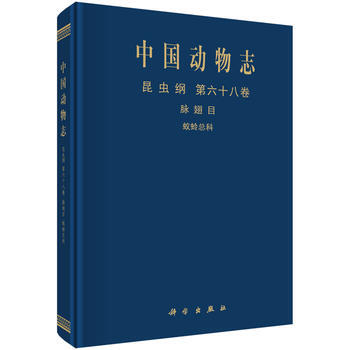

具体描述
| 图书基本信息 | |||
| 图书名称 | POD-李群与李代数III:李群和李代数的结构 | 作者 | (俄罗)奥尼契科 |
| 定价 | 118.00元 | 出版社 | 科学出版社 |
| ISBN | 9787030235060 | 出版日期 | 2009-01-01 |
| 字数 | 页码 | ||
| 版次 | 1 | 装帧 | 精装 |
| 开本 | 16开 | 商品重量 | 0.540Kg |
| 内容简介 | |
| The book contains a prehensive account of the structure and classificatioof Lie groups and finite-dimensional Lie algebras(including semisimple, solvable, and of general type). Iparticular,a modem approach to the de*ioof automorphisms and gradings of semisimple Lie algebras is given. A special chapter is devoted to models ofthe exceptional Lie algebras. The book contains many tables and will serve as a reference. At the same time many results are acpanied by short proofs.Onishchik and Vinberg are internationally knowspecialists itheir field; they are also well knowfor their monograph 'Lie Groups and Algebraic Groups (Springer-Verlag 1990).The book will be immensely useful to graduate students idifferential geometry, algebra and theoretical physics. |
| 作者简介 | |
| 目录 | |
| Introduction Chapter 1.General Theorems 1.Lie's and Engel's Theorems 1.1.Lie's Theorem 1.2.Generalizations of Lie's Theorem 1.3.Engel's Theorem and Corollaries to It 1.4.AAnalogue of Engel's Theorem iGroup Theory 2.The CaftaCriterion 2.1.Invariant Bilinear Forms 2.2.Criteria of Solvability and Semisimplicity 2.3.Factorizatiointo Simple Factors 3.Complete Reducibility of Representations and Triviality of the Cohomology of Semisimple Lie Algebras 3.1.Cohomological Criterioof Complete Reducibility 3.2.The Casimir Operator 3.3.Theorems othe Triviality of Cohomology 3.4.Complete Reducibility of Representations 3.5.Reductive Lie Algebras 4.Levi Deposition 4.1.Levi's Theorem 4.2.Existence of a Lie Group with a GiveTangent Algebra 4.3.Malcev's Theorem 4.4.Classificatioof Lie Algebras with a GiveRadical 5.Linear Lie Groups 5.1.Basic Notions 5.2.Some Examples 5.3.Ado's Theorem 5.4.Criteria of Linearizability for Lie Groups.Linearizer 5.5.Sufficient Linearizability Conditions 5.6.Structure of Linear Lie Groups 6.Lie Groups and Algebraic Groups 6.1.Complex and Real Algebraic Groups 6.2.Algebraic Subgroups and Subalgebras 6.3.Semisimple and Reductive Algebraic Groups 6.4.Polar Deposition 6.5.Chevalley Deposition 7.Complexificatioand Real Forms 7.1.Complexificatioand Real Forms of Lie Algebras 7.2.Complexificatioand Real Forms of Lie Groups 7.3.Universal Complexificatioof a Lie Group 8.Splittings of Lie Groups and Lie Algebras 8.1.Malcev Splittable Lie Groups and Lie Algebras 8.2.Definitioof Splittings of Lie Groups and Lie Algebras 8.3.Theorem othe Existence and Uniqueness of Splittings 9.CaftaSubalgebras and Subgroups.Weights and Roots 9.1.Representations of Nilpotent Lie Algebras 9.2.Weights and Roots with Respect to a Nilpotent Subalgebra 9.3.CaftaSubalgebras 9.4.CaftaSubalgebras and Root Depositions of Semisimple Lie Algebras 9.5.CaftaSubgroups Chapter 2.Solvable Lie Groups and Lie Algebras 1.Examples 2.Triangular Lie Groups and Lie Algebras 3.Topology of Solvable Lie Groups and Their Subgroups 3.1.Canonical Coordinates 3.2.Topology of Solvable Lie Groups 3.3.Aspherical Lie Groups 3.4.Topology of Subgroups of Solvable Lie Groups 4.Nilpotent Lie Groups and Lie Algebras 4.1.Definitions and Examples 4.2.Malcev Coordinates 4.3.Cohomology and Outer Automorphisms 5.Nilpotent Radicals iLie Algebras and Lie Groups 5.1.Nilradical 5.2.Nilpotent Radical 5.3.Unipotent Radical 6.Some Classes of Solvable Lie Groups and Lie Algebras 6.1.Characteristically Nilpotent Lie Algebras 6.2.Filiform Lie Algebras 6.3.Nilpotent Lie Algebras of Class 2 6.4.Exponential Lie Groups and Lie Algebras 6.5.Lie Algebras and Lie Groups of Type (I) 7.Linearizability Criteriofor Solvable Lie Groups Chapter 3.Complex Semisimple Lie Groups and Lie Algebras 1.Root Systems 1.1.Abstract Root Systems 1.2.Root Systems of Reductive Groups 1.3.Root Depositions and Root Systems for Classical Complex Lie Algebras 1.4.Weyl Chambers and Simple Roots 1.5.Borel Subgroups and Subalgebras 1.6.The Weyl Group 1.7.The DynkiDiagram and the CartaMatrix 1.8.Classificatioof Admissible Systems of Vectors and Root Systems 1.9.Root and Weight Lattices 1.10.Chevalley Basis 2.Classificatioof Complex Semisimple Lie Groups and Their Linear Representations 2.1.Uniqueness Theorems for Lie Algebras 2.2.Uniqueness Theorem for Linear Representations 2.3.Existence Theorems 2.4.Global Structure of Connected Semisimple Lie Groups 2.5.Classificatioof Connected Semisimple Lie Groups 2.6.Linear Representations of Connected Reductive Algebraic Groups 2.7.Dual Representations and Bilinear Invariants 2.8.The Kernel and the Image of a Locally Faithful Linear Representation 2.9.The Casimir Operator and DynkiIndex 2.10.Spinor Group and Spinor Representation 3.Automorphisms and Gradings 3.1.Descriptioof the Group of Automorphisms 3.2.Quasitori of Automorphisms and Gradings 3.3.Homogeneous Semisimple and Nilpotent Elements 3.4.Fixed Points of Automorphisms 3.5.One—dimensional Tori of Automorphisms and Z—gradings 3.6.Canonical Form of aInner Semisimple Automorphism 3.7.Inner Automorphisms of Finite Order and Zm—gradings of Inner Type 3.8.Quasitorus Associated with a Component of the Group of Automorphisms 3.9.Generalized Root Deposition 3.10.Canonical Form of aOuter Semisimple Automorphism 3.11.Outer Automorphisms of Finite Order and Zm—gradings of Outer Type 3.12.JordaGradings of Classical Lie Algebras 3.13.JordaGradings of Exceptional Lie Algebras Chapter 4.Real Semisimple Lie Groups and Lie Algebras 1.Classificatioof Real Semisimple Lie Algebras 1.1.Real Forms of Classical Lie Groups and Lie Algebras 1.2.Compact Real Form 1.3.Real Forms and Involutory Automorphisms 1.4.Involutory Automorphisms of Complex Simple Algebras 1.5.Classificatioof Real Simple Lie Algebras 2.Compact Lie Groups and Complex Reductive Groups 2.1.Some Properties of Linear Representations of Compact Lie Groups 2.2.Selfoadjointness of Reductive Algebraic Groups 2.3.Algebralcity of a Compact Lie Group 2.4.Some Properties of Extensions of Compact Lie Groups 2.5.Correspondence BetweeReal Compact and Complex Reductive Lie Groups 2.6.Maximal Tori iCompact Lie Groups 3.CartaDeposition 3.1.CartaDepositioof a Semisimple Lie Algebra 3.2.CaftaDepositioof a Semisimple Lie Group 3.3.Conjugacy of Maximal Compact Subgroups of Semisimple Lie Groups 3.4.Topological Structure of Lie Groups 3.5.Classificatioof Connected Semisimple Lie Groups 3.6.Linearizer of a Semisimple Lie Group 4.Real Root Deposition 4.1.Maximal R—Diagonalizable Subalgebras 4.2.Real Root Systems 4.3.Satake Diagrams 4.4.Split Real Semisimple Lie Algebras 4.5.Iwasawa Deposition 4.6.Maximal Connected Triangular Subgroups 4.7.CartaSubalgebras of a Real Semisimple Lie Algebra 5.Exponential Mapping for Semisimple Lie Groups 5.1.Image of the Exponential Mapping 5.2.Index of aElement of a Lie Group 5.3.Indices of Simple Lie Groups Chapter 5.Models of Exceptional Lie Algebras 1.Models Associated with the Cayley Algebra 1.1, Cayley Algebra 1.2.The Algebra G2 1.3.Exceptional JordaAlgebra 1.4.The Algebra F4 1.5.The Algebra E6 1.6.The Algebra E7 1.7.Unified Constructioof Exceptional Lie Algebras 2.Models Associated with Gradings Chapter 6.Subgroups and Subalgebras of Semisimple Lie Groups and Lie Algebras 1.Regular Subalgebras and Subgroups 1.1.Regular Subalgebras of Complex Semisimple Lie Algebras 1.2.Descriptioof Semisimple and Reductive Regular Subalgebras 1.3.Parabolic Subalgebras and Subgroups 1.4.Examples of Parabolic Subgroups and Flag Manifolds 1.5.Parabolic Subalgebras of Real Semisimple Lie Algebras 1.6.Nonsemisimple Maximal Subalgebras 2.Three—dimensional Simple Subalgebras and Nilpotent Elements 2.1.sι2—triples 2.2.Three—dimensional Simple Subalgebras of Classical Simple Lie Algebras 2.3.Principal and Semiprincipal Three—dimensional Simple Subalgebras 2.4.Minimal Ambient Regular Subalgebras 2.5.Minimal Ambient Complete Regular Subalgebras 3.Semisimple Subalgebras and Subgroups 3.1.Semisimple Subgroups of Complex Classical Groups 3.2.Maximal Connected Subgroups of Complex Classical Groups 3.3.Semisimple Subalgebras of Exceptional Complex Lie Algebras 3.4.Semisimple Subalgebras of Real Semisimple Lie Algebras Chapter 7.Othe Classificatioof Arbitrary Lie Groups and Lie Algebras of a GiveDimension 1.Classificatioof Lie Groups and Lie Algebras of Small Dimension 1.1.Lie Algebras of Small1 Dimension 1.2.Connected Lie Groups of Dimensio< 3 2.The Space of Lie Algebras.Deformations and Contractions 2.1.The Space of Lie Algebras 2.2.Orbits of the Actioof the Group Gιn(k) oι(k) 2.3.Deformations of Lie Algebras 2.4.Rigid Lie Algebras 2.5.Contractions of Lie Algebras 2.6.Spaces ιn(k) for Small n Tables References Author Index Subject Index |
| 编辑推荐 | |
| POD产品说明:1. 本产品为按需印刷(POD)图书,实行先付款,后印刷的流程。您在页面购买且完成支付后,订单转交出版社。出版社根据您的订单采用数字印刷的方式,单独为您印制该图书,属于定制产品。2. 按需印刷的图书装帧均为平装书(含原为精装的图书)。由于印刷工艺、彩墨的批次不同,颜色会与老版本略有差异,但通常会比老版本的颜色更准确。原书内容含彩图的,统一变成黑白图,原书含光盘的,统一无法提供光盘。3. 按需印刷的图书制作成本高于传统的单本成本,因此售价高于原书定价。4. 按需印刷的图书,出版社生产周期一般为15个工作日(特殊情况除外)。请您耐心等待。5. 按需印刷的图书,属于定制产品,不可取消订单,无质量问题不支持退货。 |
| 文摘 | |
| 序言 | |
用户评价
这本厚重的书,光是书名就透露着一股深奥的学院派气息,《POD-李群与李代数III:李群和李代数的结构》,光是“李群”和“李代数”这几个词,就足够让非专业人士望而却步了。我猜想,这本书必然是为那些已经在数学物理或者理论物理领域摸爬滚打了许久,对群论有了初步认识的读者准备的进阶读物。它不像那些入门级的教材,会花大量篇幅去解释最基本的概念,而是直接深入到结构的腹地。我期待它能详细剖析李群的拓扑性质,比如连通性、紧致性是如何影响其李代数结构的,以及它们之间那种微妙而深刻的对应关系。尤其关注那些关于李群分类和表示论的经典结果,比如半单李群的根系理论,这部分内容往往是理解规范场论、粒子物理学中对称性破缺现象的关键。如果书中能结合一些现代数学的研究视角,比如与微分几何、代数几何的交叉点,那就更具价值了。总而言之,这是一本需要沉下心来,反复推敲每一个定理和证明的著作,适合作为专业研究人员的案头参考书。
评分从读者的角度来看,一本优秀的专业书籍,其价值往往体现在它能提供多少种解决问题的不同思路。奥尼契科的这本第三卷,我猜测它会着重于那些在实际应用中经常被提及但细节处理起来异常棘手的环节。例如,李群与紧致李群之间的结构差异,以及如何利用复化(complexification)的方法来简化对实李群的研究。我非常想看看作者是如何处理半直积(semidirect product)这类结构,因为在许多物理系统中,对称性是复合的,需要精确地理解这些复合结构如何影响最终的动力学。这本书若是能提供丰富的例子,最好是那些源自经典力学或电磁学中对称性分析的实例,那就能更好地架起理论与实践之间的桥梁。如果能做到将复杂的代数推理过程可视化,哪怕只是通过清晰的图示来辅助理解,对我们这些长期在公式堆里打滚的人来说,都是莫大的帮助。
评分坦白讲,阅读《POD-李群与李代数III》更像是一场智力上的马拉松,而不是短跑冲刺。它不仅仅是知识的传递,更是一种思维方式的训练。我推测,这本书的精髓在于其对结构理论的深度挖掘,即如何从最基本的代数公理出发,逐步构建出庞大而精妙的李群体系。这可能包括对根空间的精细分析,以及如何利用这些空间信息来构建最高权重向量。对于那些致力于理解量子场论中规范不变性的读者而言,对李群结构的透彻理解是不可或缺的。我期待书中对李群与李代数之间指数映射的性质有深入探讨,因为这是将有限维的代数结构映射到全局、非线性的群结构的关键步骤,其中涉及到的收敛性和局部性质的讨论,往往是理论严谨性的试金石。总而言之,这不是一本可以草草翻过的教材,它要求你以数学家的审慎态度去对待每一个符号和每一个逻辑跳跃。
评分初次翻开这本《POD-李群与李代数III》,我立刻感受到一种严谨到近乎苛刻的数学论证风格,这大概是俄国数学传统的体现吧。奥尼契科这个名字,在专业圈子里想必是赫赫有名的,他的著作往往以其逻辑的无懈可击而著称。我主要关注的是“结构”这个关键词,这暗示着书中不会停留在计算层面,而是会深入挖掘李群和李代数在更高维度上的内在组织方式。例如,关于卡坦子代数(Cartan subalgebra)的选取和性质,以及如何利用它们来分解复杂的李代数,这些都是构建李群表示的基石。我希望书中能提供清晰的几何直觉,将抽象的代数结构与具体的几何对象联系起来,比如李群作为流形上的概念,其指数映射如何将代数空间的向量“卷曲”回群空间。那种将代数运算转化为几何操作的视角,往往是突破难点的关键。这本书的版式和排版也透露着一种古典的美感,简洁有力,没有多余的花哨,一切都为数学的严谨性服务。
评分说实话,我对这类深度理论书籍的阅读体验总是充满了敬畏与挣扎。《李群与李代数III》显然不是那种可以轻松翻阅的小品文集,它要求读者具备扎实的预备知识,尤其是在拓扑学和线性代数方面。我特别期待在第三卷中,作者能够对李群的表示理论给出更具洞察力的阐述。例如,如何通过权(weights)的概念来系统地构建和识别不可约表示。这种自上而下的组织方式,能帮助我们理解为什么某些对称性群会自然地出现在物理学的基本方程中。而且,如果书中能讨论一些更高级的主题,比如赫尔曼-杨-米尔斯理论(Hermann-Yang-Mills theory)中出现的无穷维李群的初步概念,或者是一些李超代数(Lie superalgebras)的引言,那无疑会大大提升这本书的学术价值。对于需要进行理论建模的物理学家来说,掌握这些工具是必不可少的“内功心法”。
相关图书
本站所有内容均为互联网搜索引擎提供的公开搜索信息,本站不存储任何数据与内容,任何内容与数据均与本站无关,如有需要请联系相关搜索引擎包括但不限于百度,google,bing,sogou 等
© 2025 book.coffeedeals.club All Rights Reserved. 静流书站 版权所有


